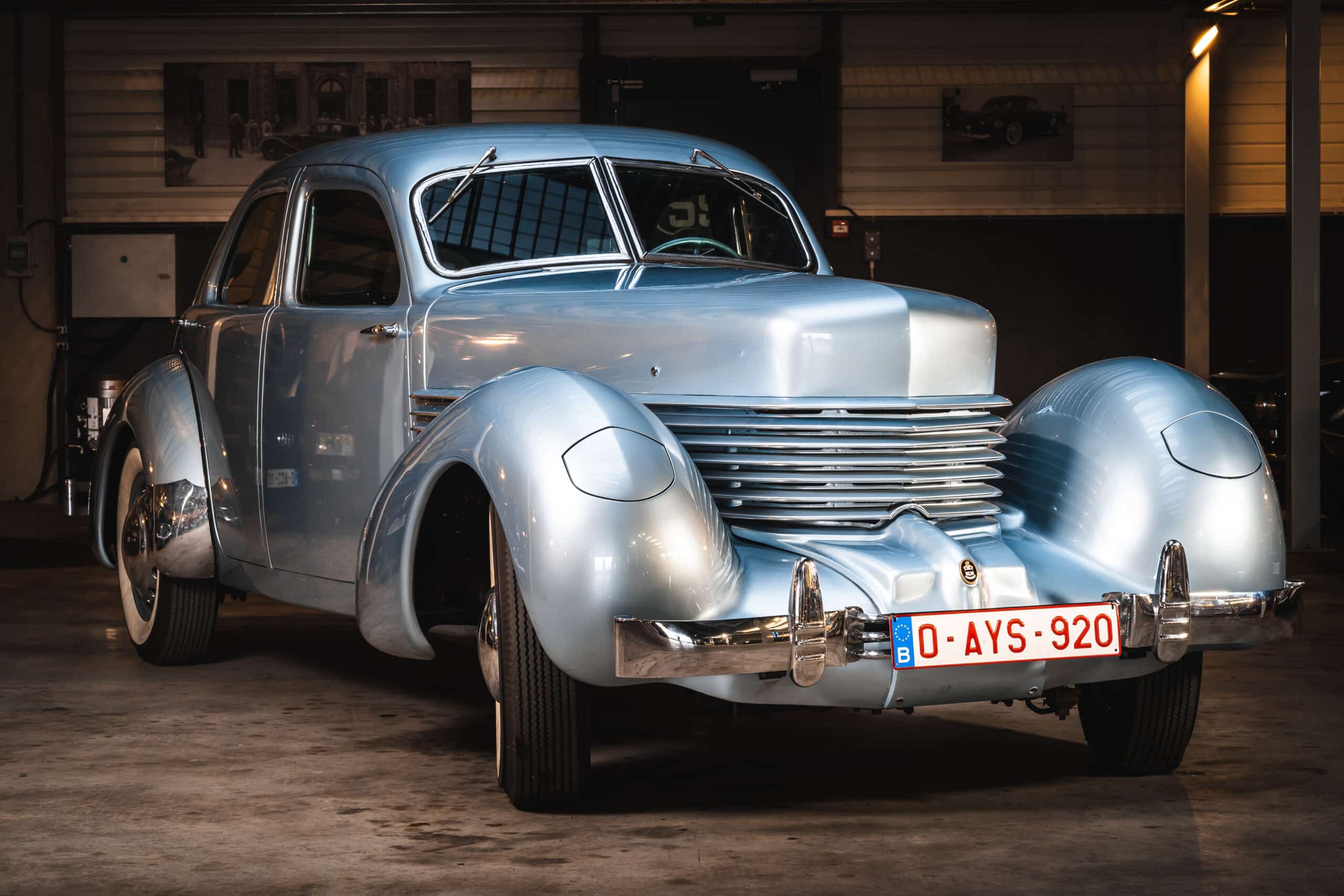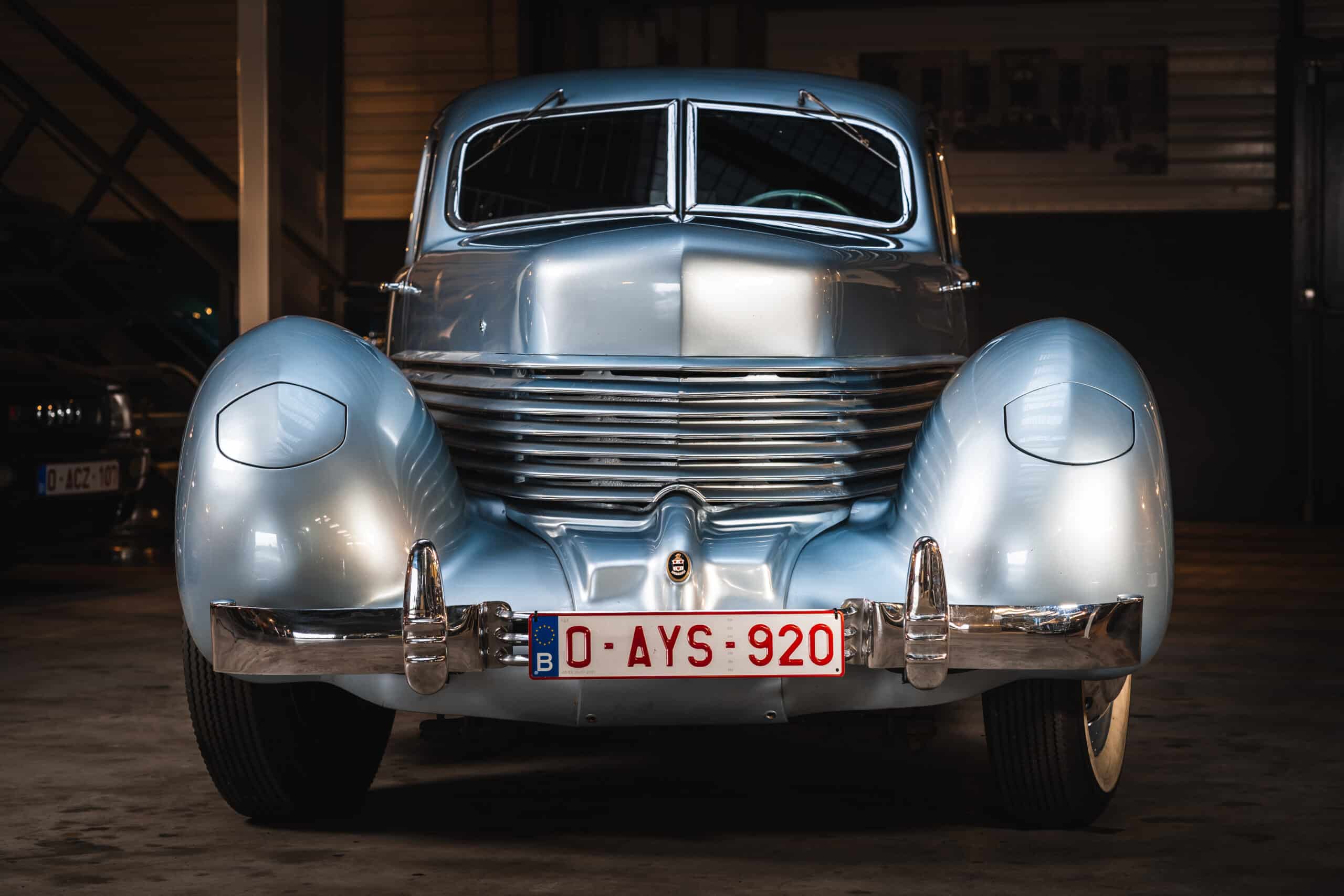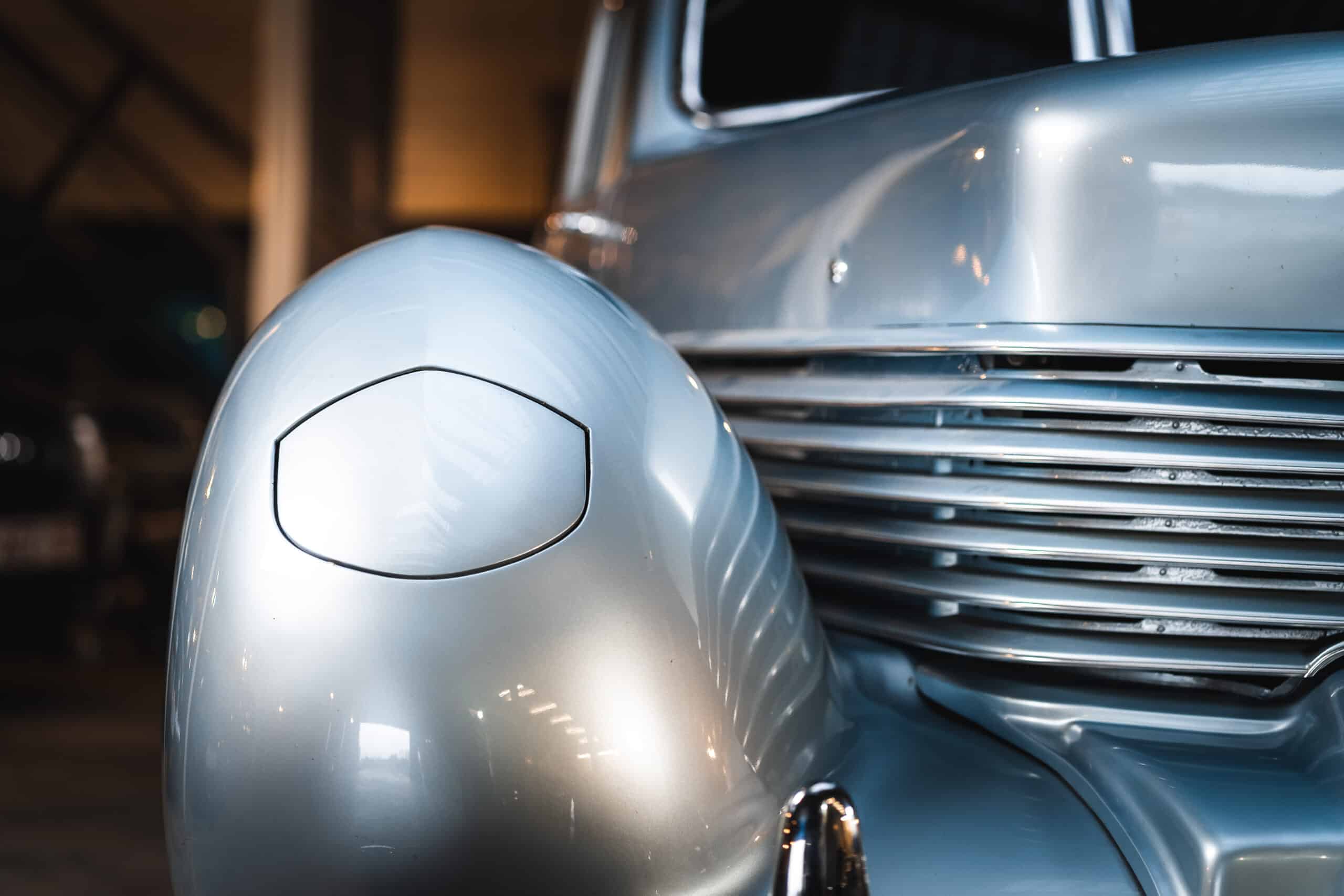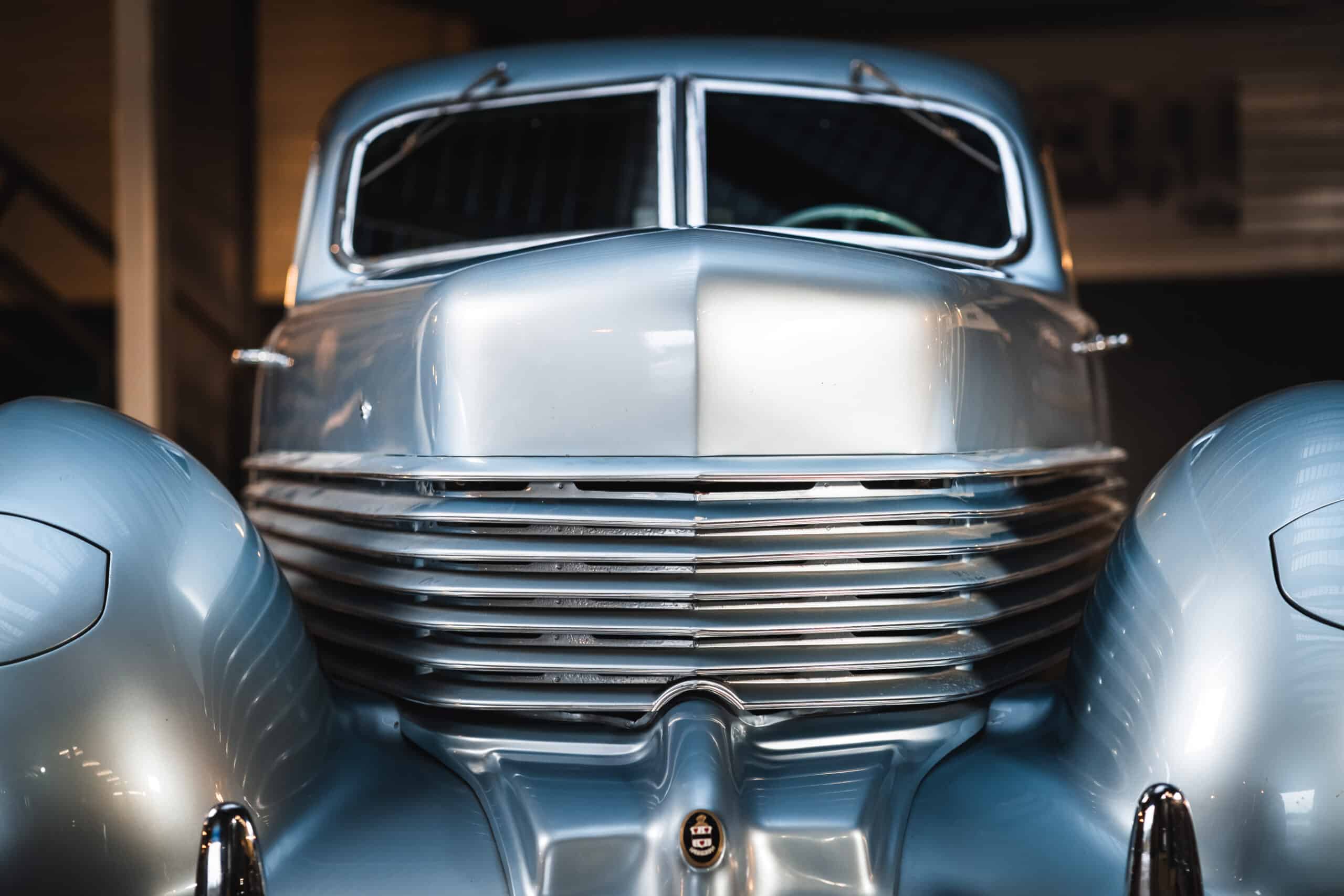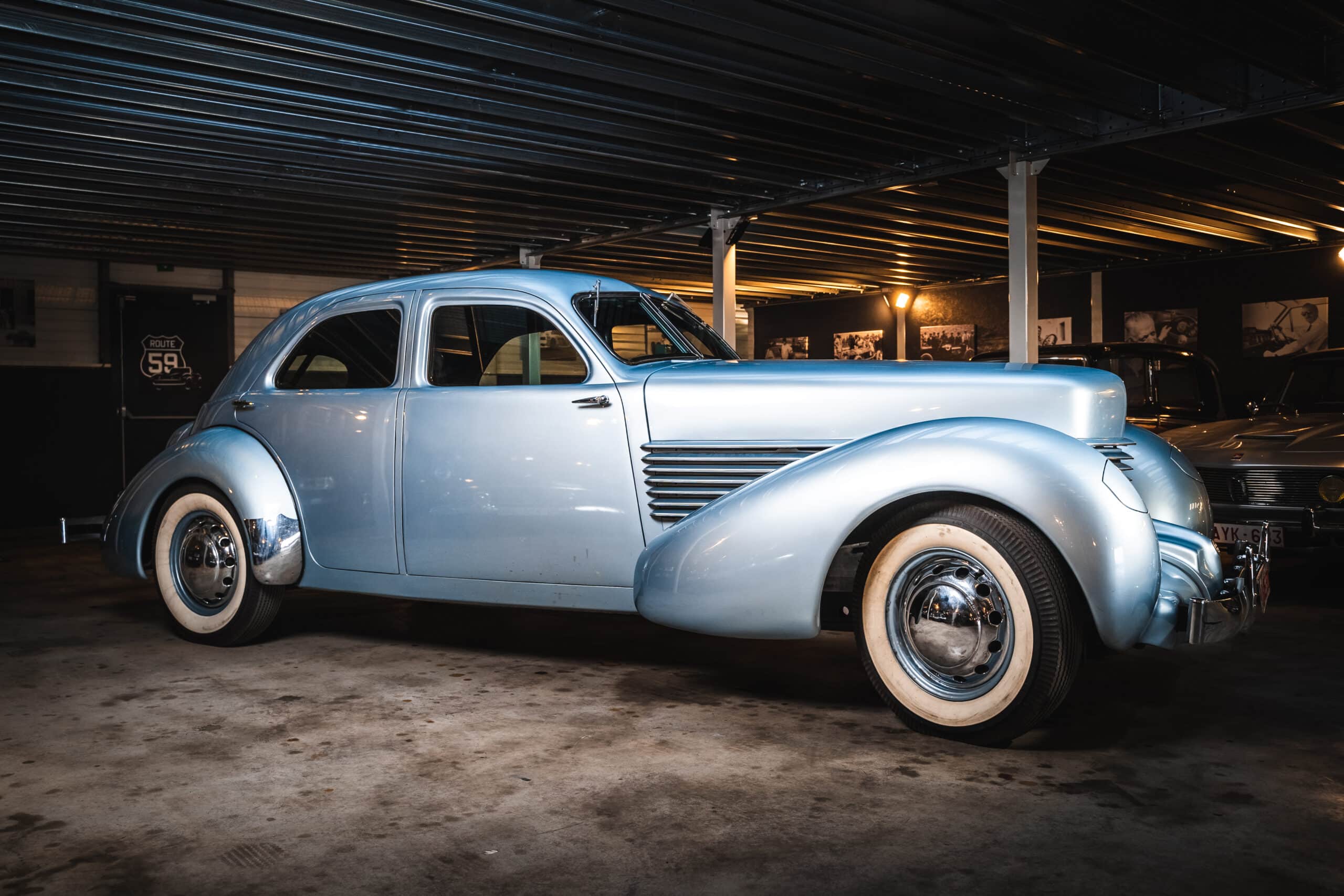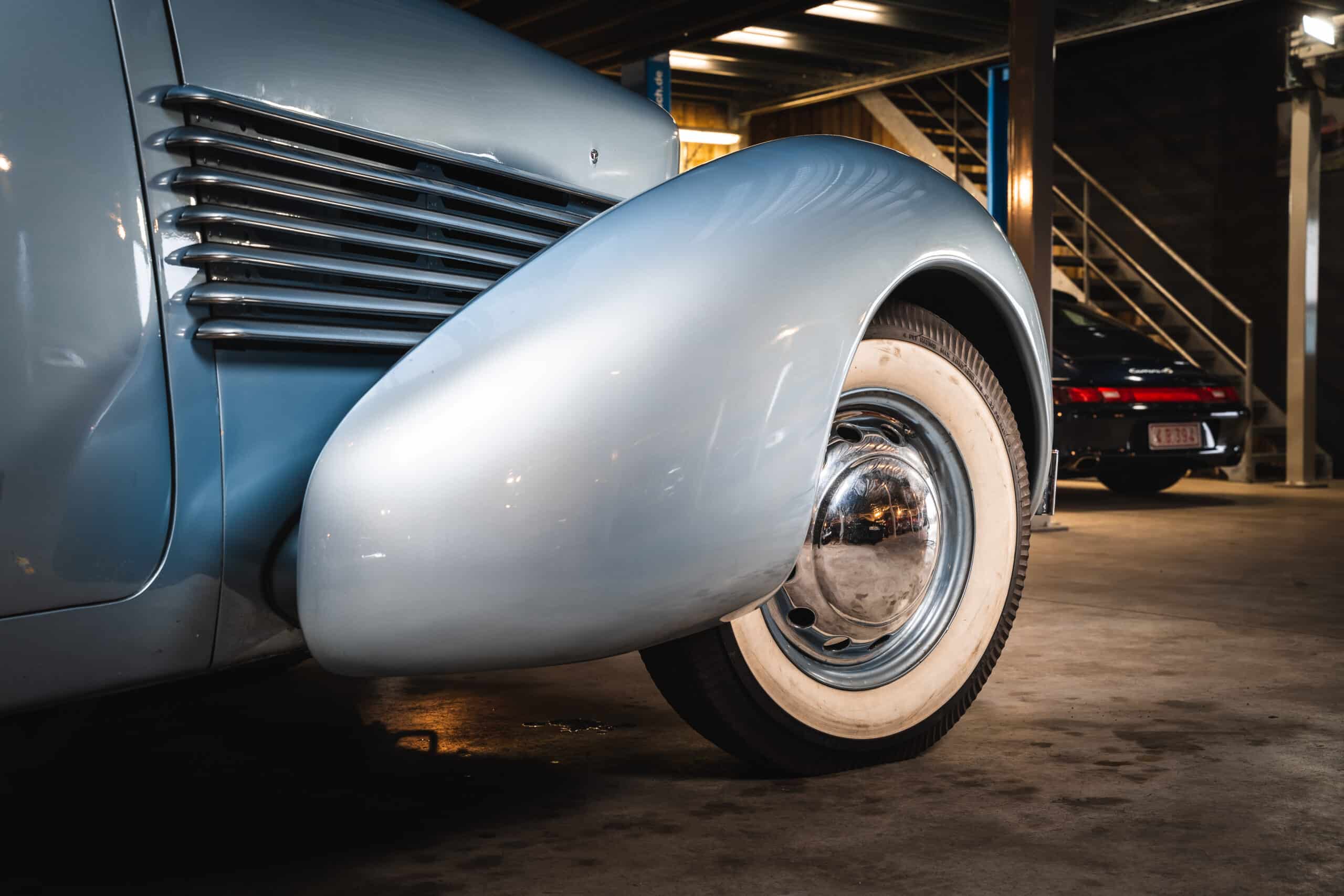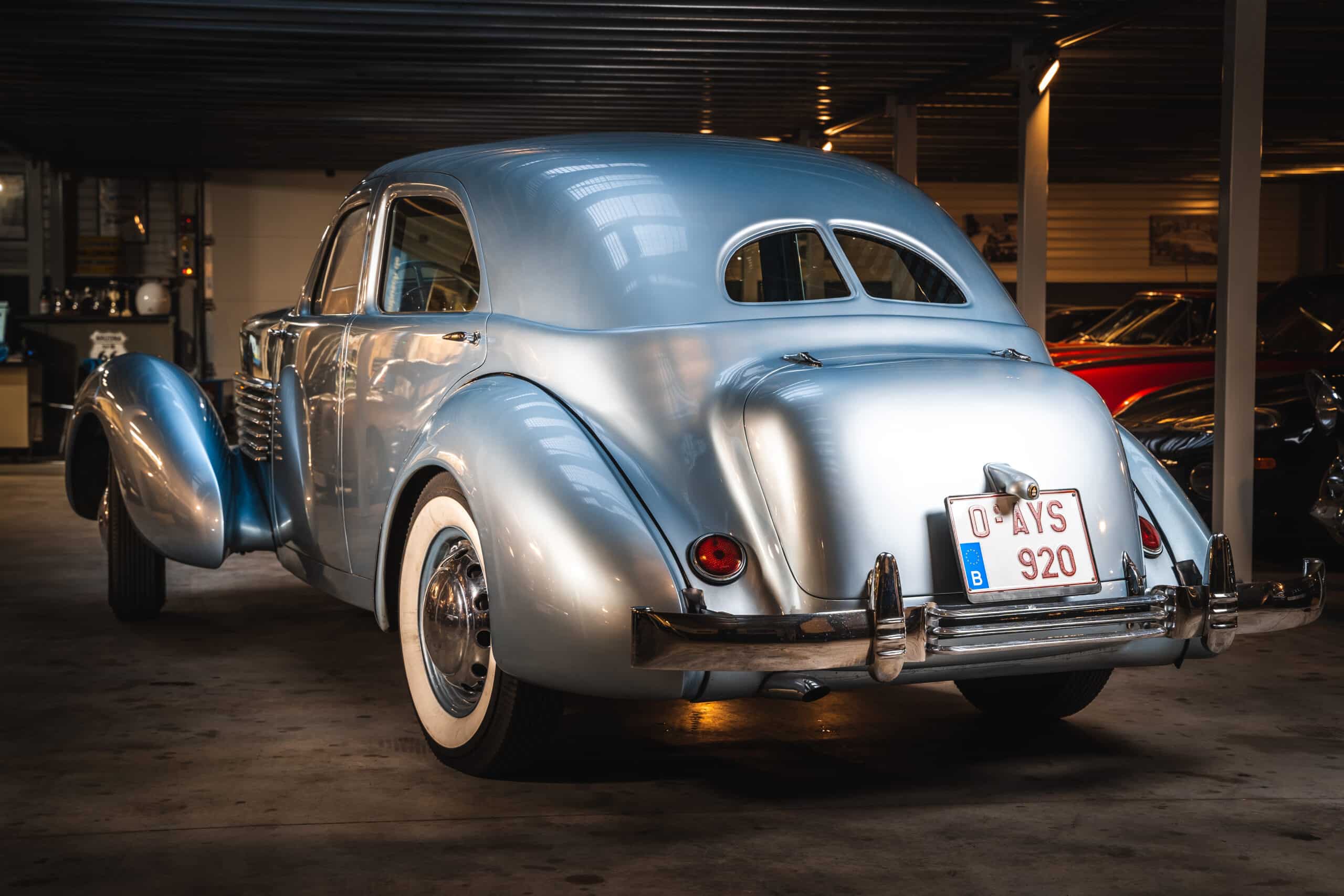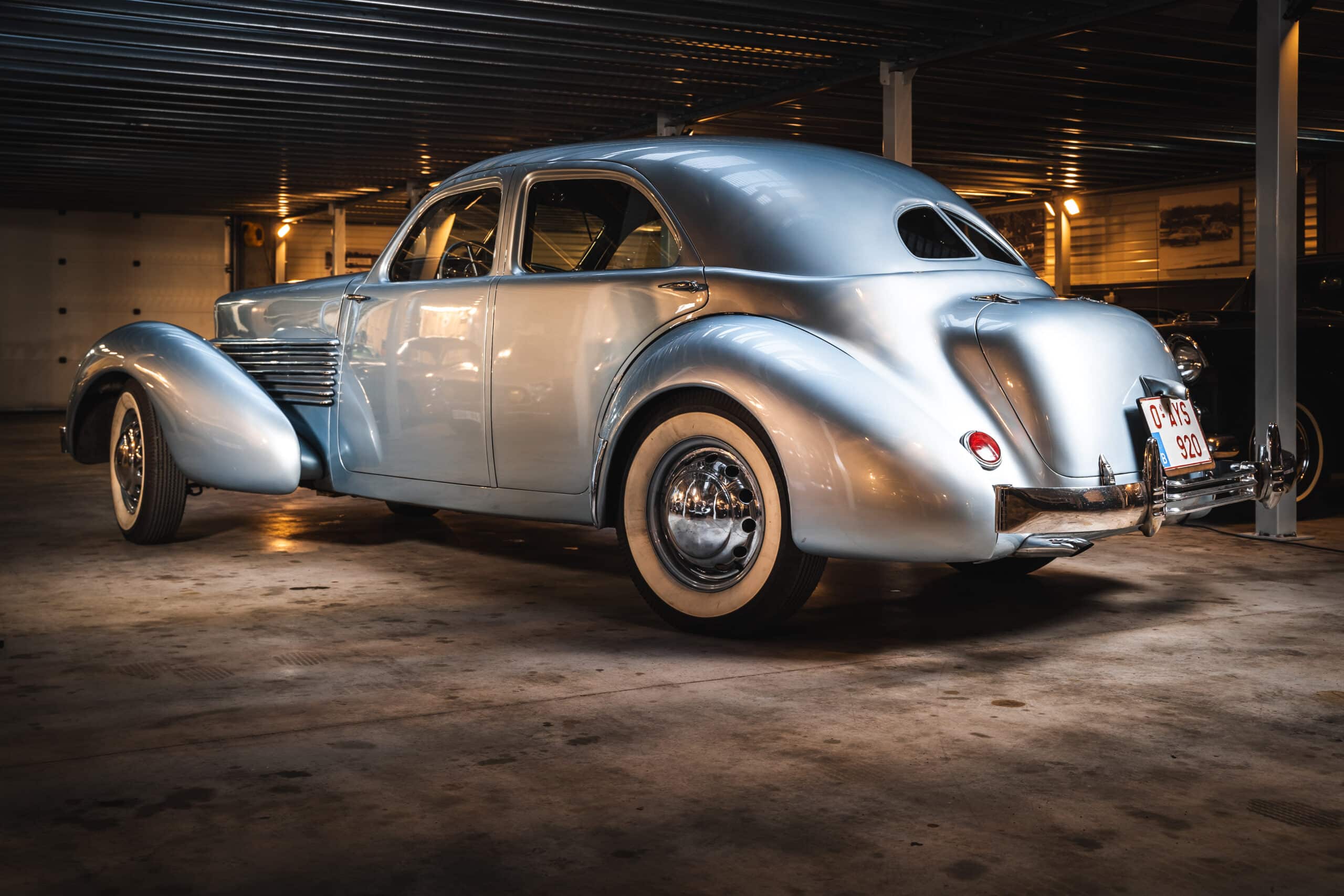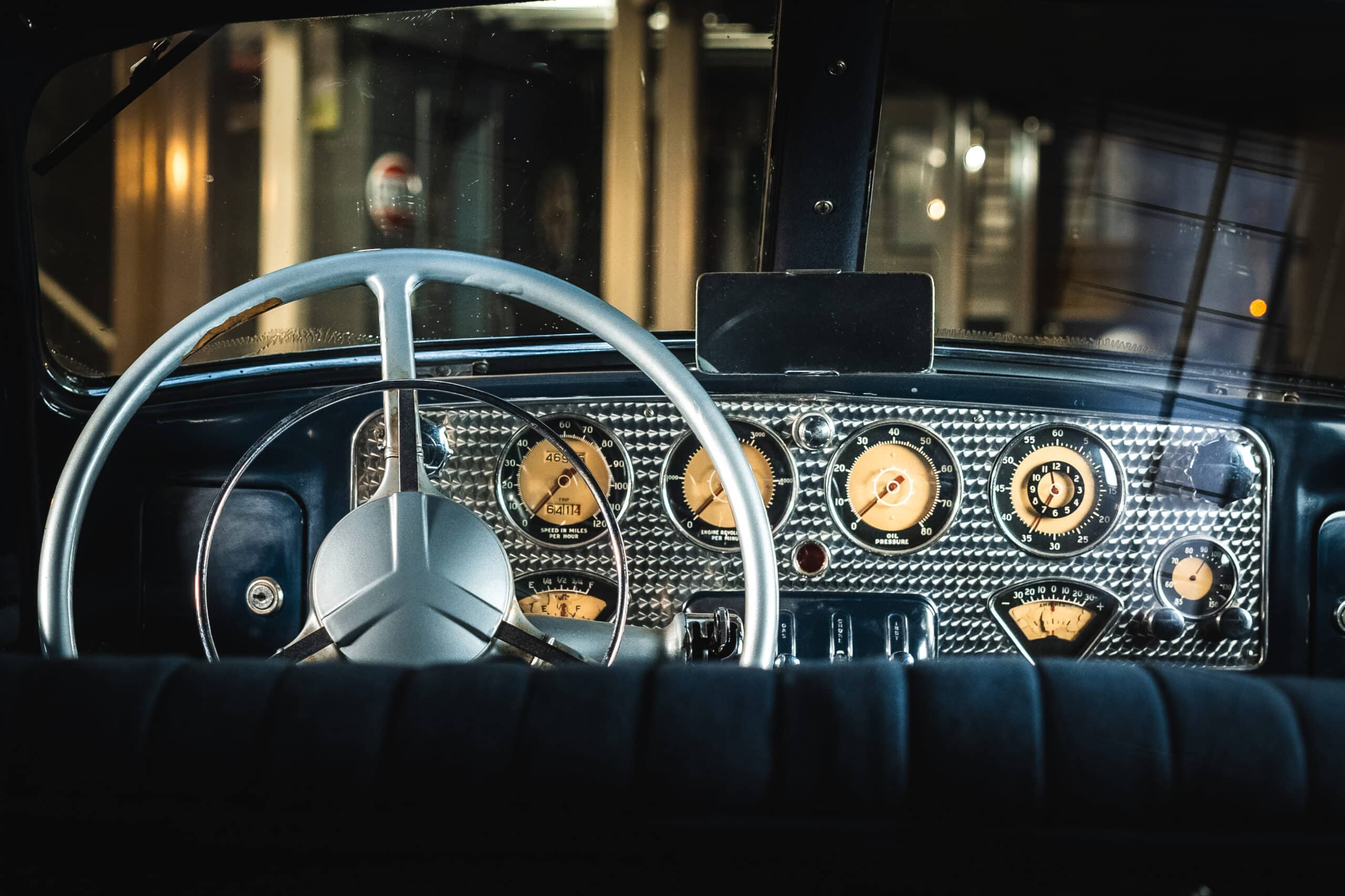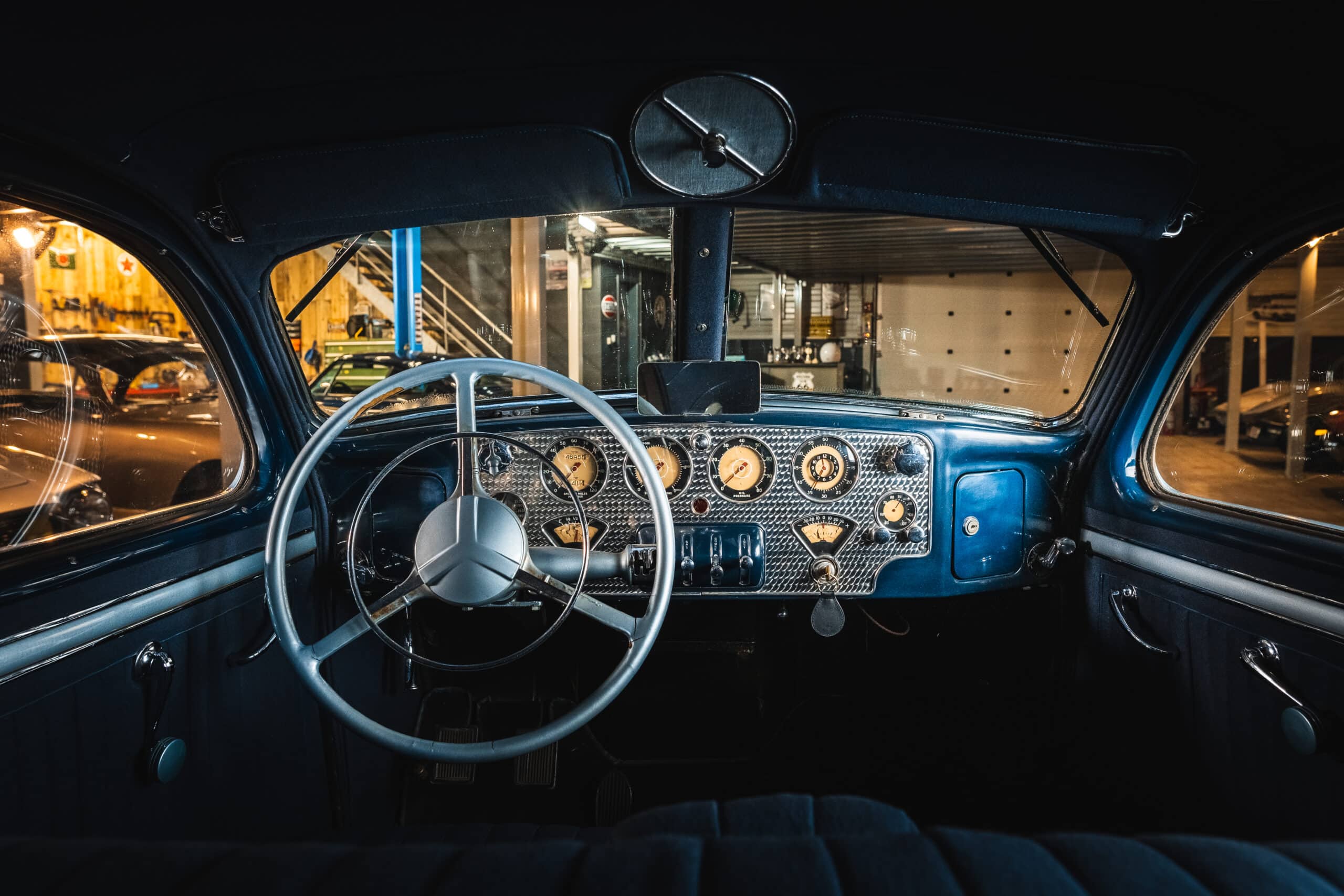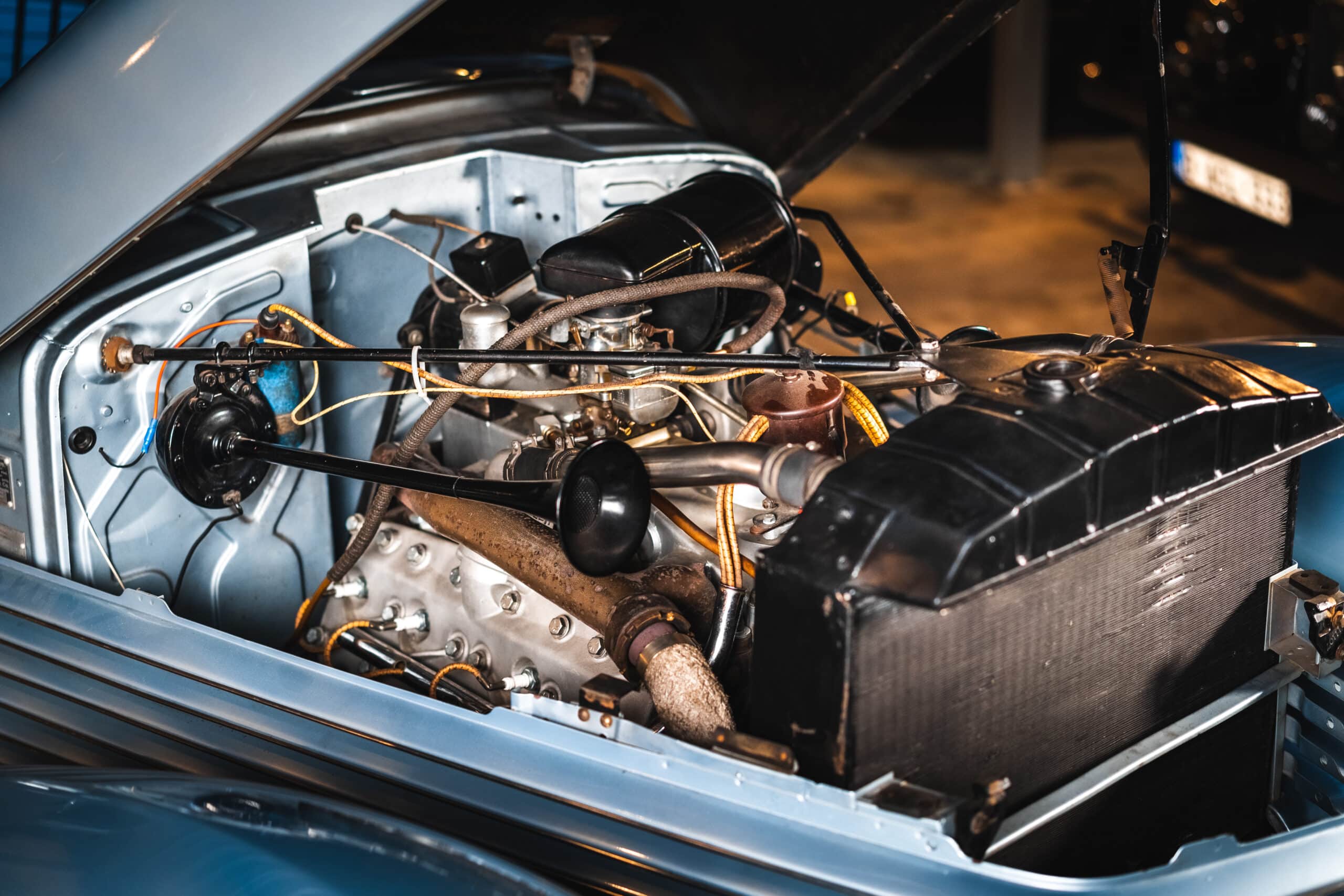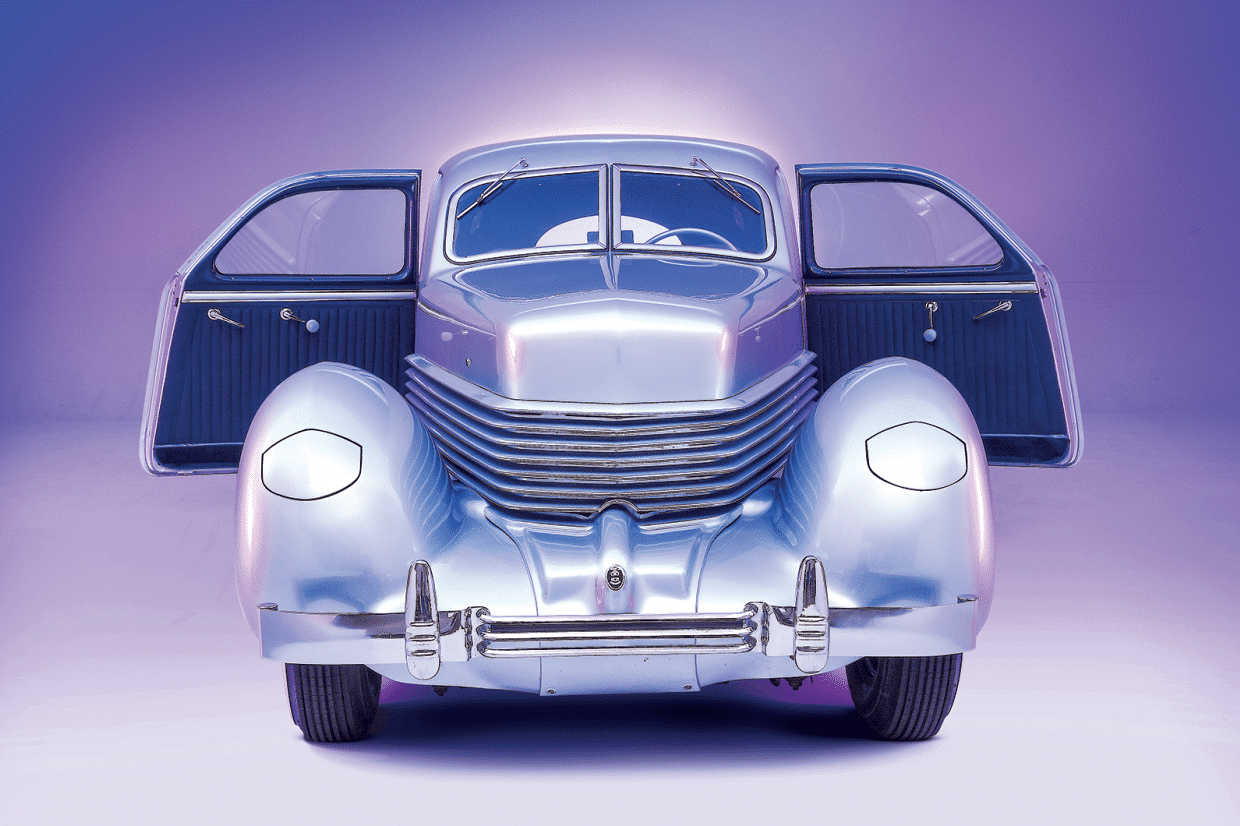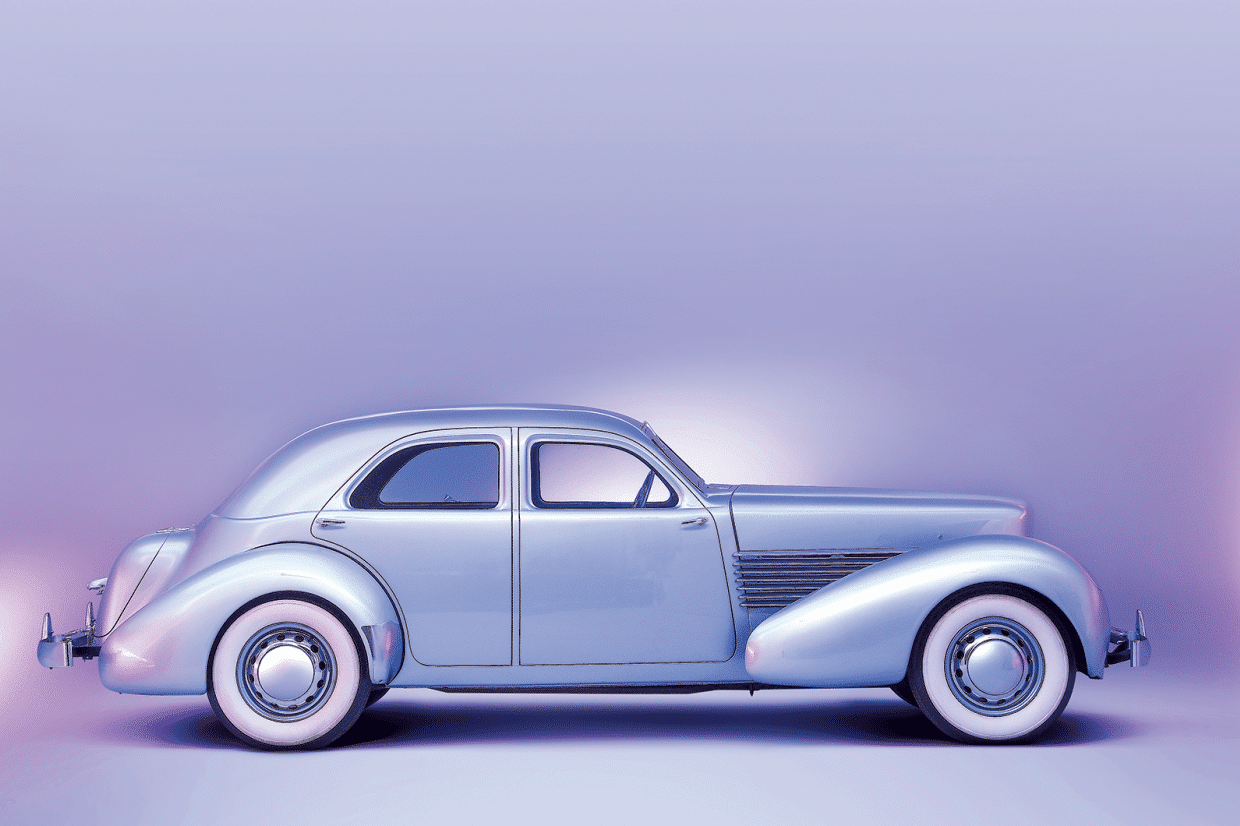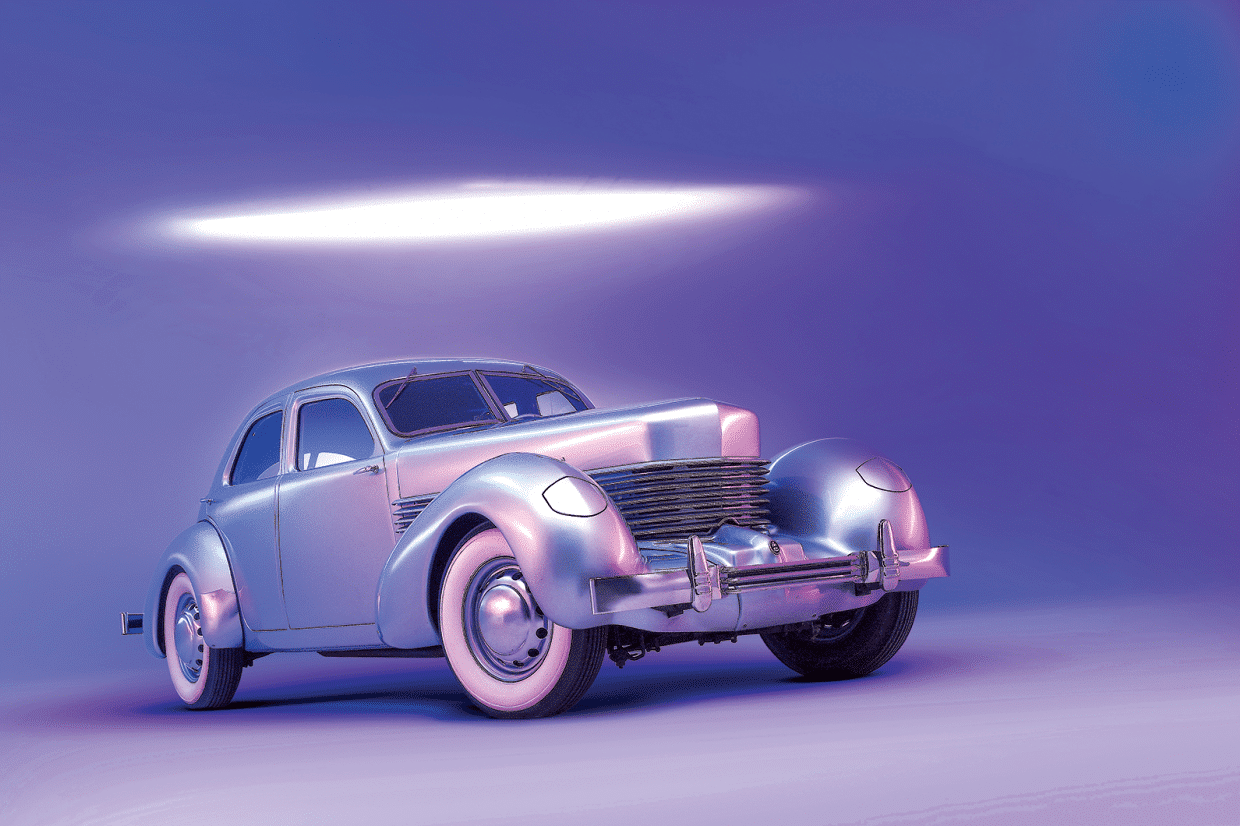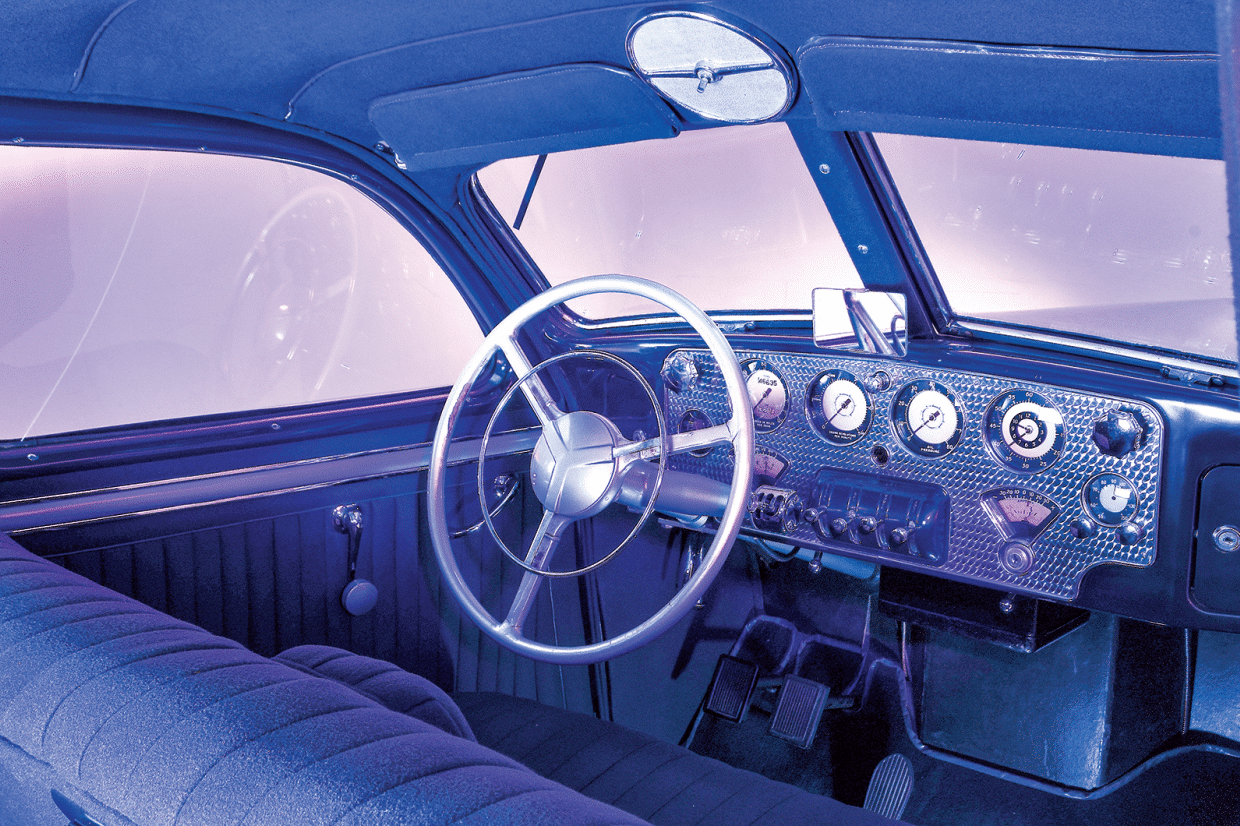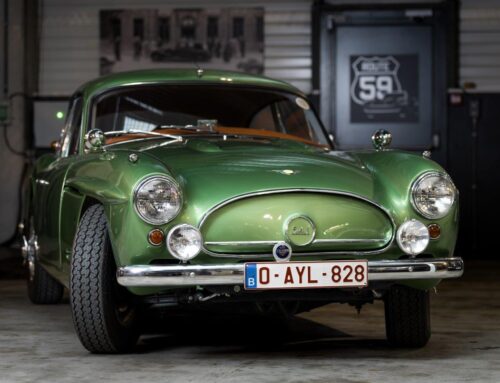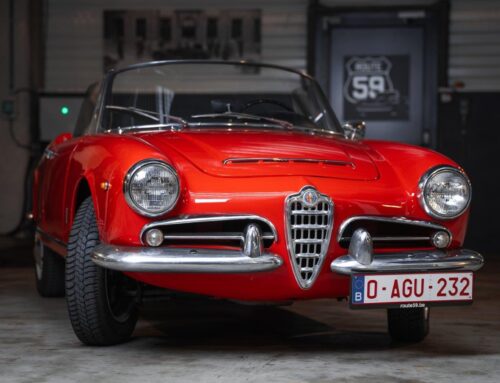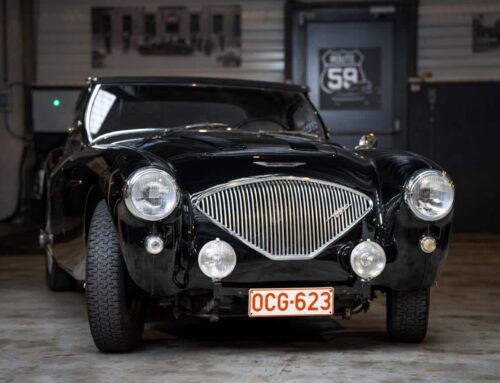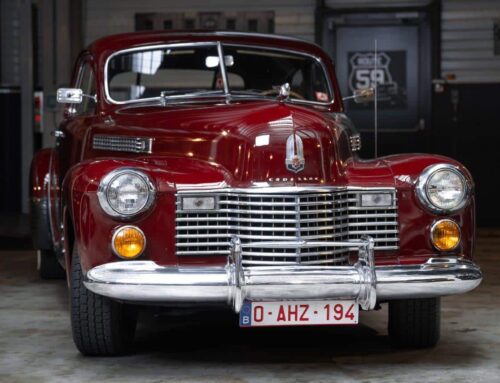Cord 812
| Brand | Cord |
| Model | 812 Beverley |
| Color | Blue |
| Transmission | Manual 4-speed |
| Pk | 127 ch |
| Year | 1936 |
| Price | Not for sale |
The Cord 810/812 is one of the few automobiles on permanent display at the Museum of Modern Art in New York. It debuted in November 1935 and was the work of a team led by Duesenberg designer Gordon Buehrig. The 810’s styling lacked running boards, had streamlined fenders, a lowered floor, hidden door hinges, unitary construction, and a coffin-like nose with louvers, without the traditional vertical radiator. It made its debut at the New York Auto Show in November 1935.
Errett Lobban Cord presented the L29 in 1929 as an intermediate model between the Auburn and the Duesenberg. Produced until 1931, it had front-wheel drive and a Lycoming eight-cylinder in-line engine. Its front-wheel drive design allowed for a low chassis and offered unique creativity for body builders to work on their craft.
The Cord 810, similarly to its predecessor, was front-wheel drive, but a more compact Lycoming V8 engine paired with a four-speed transmission operated by pressing a European-style pre-selector switch on the steering column. The engine was placed further back in the chassis, which gave it better balance. In the standard version, the engine developed 125 horsepower. With the help of a compressor, this figure increases to 170 hp.
The Cord 810/812 was available in Sportsman, Phaeton, and two sedan models – the Westchester and the more upscale Beverly. The two sedans differed in their interiors – the Beverly had pleated fabric seats while the Westchester had flat seats in wide fabric. Early production Beverly models had a unique “armchair” interior design, with fixed armrests in the front and rear. Customized sedans on a longer wheelbase joined the four-model 812 lineup in 1937.
Unfortunately, production delays and the Depression plunged the Cord Corporation into serious financial difficulties; when its owner sold his shares in August 1937, it marked the end of Cord, Auburn and Duesenberg.
This example, purchased in November 2020 in England, has travelled the world: after leaving the USA in the 70s, it ended up in a museum in Japan. It was then acquired by a dealer in New Zealand, where it was mechanically restored following its long immobilization in the Japanese museum. After a short transit in England, it is now in Belgium, one of only two Cord registered in the country!
This Cord was featured in the October 2020 issue of Classic & Sports Car.


